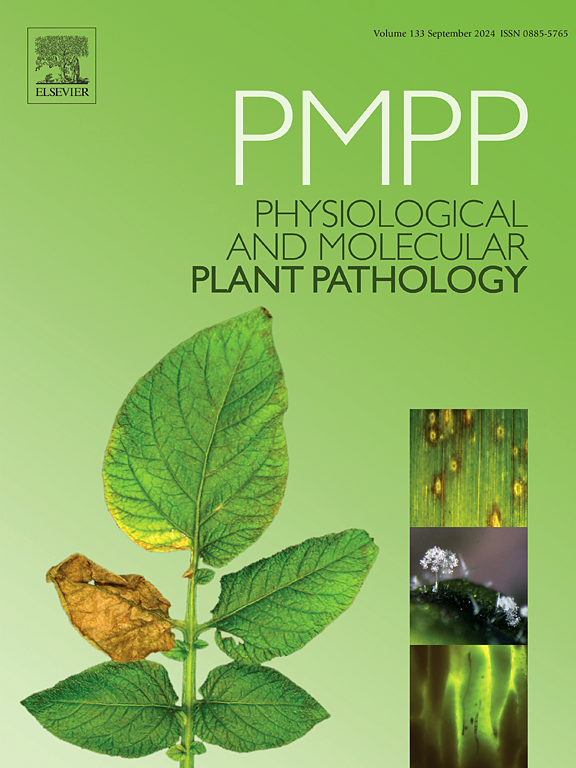Genetic mapping of quantitative trait loci conferring resistance to race 4 of Xanthomonas campestris pv. campestris in cabbage (Brassica oleracea var. capitata)
IF 2.8
3区 农林科学
Q2 PLANT SCIENCES
引用次数: 0
Abstract
Black rot is one of the most serious bacterial diseases affecting cabbage, yet the genetic architecture underlying its resistance remains poorly characterized. To address this knowledge gap, we explored the quantitative trait loci controlling black rot resistance during the seedling stage in a mapping population generated from well-established resistant and susceptible cabbage lines. We applied a mixed major gene plus polygene inheritance model, utilizing a joint analysis method across multiple generations, which revealed that the resistance to black rot in cabbage is controlled by two major genes with additive-dominant-epistatic effects, as well as multiple additive-dominant genes. Subsequently, we employed bulked-segregant analysis (BSA-seq) and QTL-mapping methods to identify the loci associated with black rot resistance using an F2 population. In total, we identified eleven candidate loci responsible for black rot resistance on several chromosomes, including C03, C04, C07, C08, and C09. Furthermore, we performed a multi-layered investigation of the top candidate genes within these loci, analyzing their dynamic expression levels in response to black rot disease and identifying multiple promising candidate genes. Our findings provide significant insights into the molecular mechanisms of black rot resistance in cabbage, establishing a foundation for marker-assisted breeding strategies and functional genomic studies targeting this economically important trait.
甘蓝(Brassica oleracea var. capitata)抗野油菜黄单胞菌 pv. campestris 第 4 种族的数量性状位点遗传图谱
黑腐病是影响卷心菜的最严重的细菌性疾病之一,但其抗性的遗传结构仍不清楚。为了解决这一知识差距,我们在一个由成熟的抗性和易感卷心菜系产生的作图群体中探索了控制幼苗期黑腐病抗性的数量性状位点。采用主基因+多基因混合遗传模型,采用多代联合分析方法,发现白菜抗黑腐病是由两个具有加性-显性-上位效应的主基因和多个加性-显性基因控制的。随后,我们采用散装分离分析(BSA-seq)和qtl定位方法,以F2群体为样本,确定了与黑腐病抗性相关的位点。我们总共在包括C03、C04、C07、C08和C09在内的几条染色体上发现了11个负责抗黑腐病的候选位点。此外,我们对这些基因座内的顶级候选基因进行了多层调查,分析了它们在黑腐病响应中的动态表达水平,并确定了多个有希望的候选基因。我们的研究结果为白菜抗黑腐病的分子机制提供了重要的见解,为针对这一重要经济性状的标记辅助育种策略和功能基因组研究奠定了基础。
本文章由计算机程序翻译,如有差异,请以英文原文为准。
求助全文
约1分钟内获得全文
求助全文
来源期刊
CiteScore
4.30
自引率
7.40%
发文量
130
审稿时长
38 days
期刊介绍:
Physiological and Molecular Plant Pathology provides an International forum for original research papers, reviews, and commentaries on all aspects of the molecular biology, biochemistry, physiology, histology and cytology, genetics and evolution of plant-microbe interactions.
Papers on all kinds of infective pathogen, including viruses, prokaryotes, fungi, and nematodes, as well as mutualistic organisms such as Rhizobium and mycorrhyzal fungi, are acceptable as long as they have a bearing on the interaction between pathogen and plant.

 求助内容:
求助内容: 应助结果提醒方式:
应助结果提醒方式:


